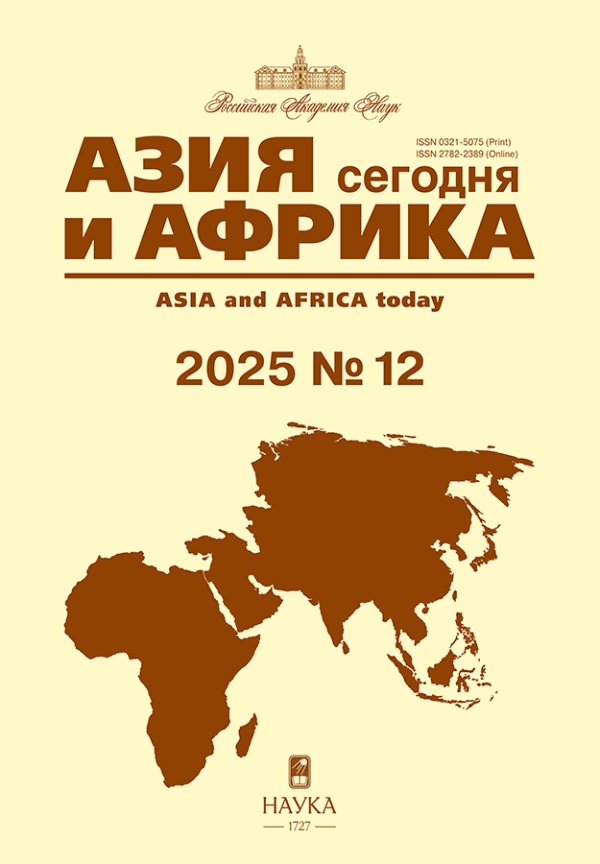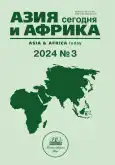Burkina Faso: From an Unfinished Popular Uprising to Military Coups
- Authors: Sadovskaya L.M.1
-
Affiliations:
- Institute for African Studies, Russian Academy of Sciences
- Issue: No 3 (2024)
- Pages: 48-56
- Section: Politics, economics
- URL: https://journals.rcsi.science/0321-5075/article/view/257212
- DOI: https://doi.org/10.31857/S032150750030455-2
- ID: 257212
Cite item
Full Text
Abstract
Keywords
About the authors
Lyubov M. Sadovskaya
Institute for African Studies, Russian Academy of Sciences
Email: lubowsadowskaya@yandex.ru
ORCID iD: 0000-0002-3765-9736
PhD (History), Senior Researcher, Centre for Sociological and Political Studies Moscow, Russia
References
- Polet F. 2016. Afrique subsaharienne: entre révoltes populaires et restaurations autoritaires. État des resistances dans le Sud-Afrique. https://www.cetri.be/Afrique-subsaharienne-entre?lang=fr (accessed 10.11.2018)
- Hagberg S., Kibora L., Ouattara F., and Konkobo A. 2015. Au cœur de la révolution burkinabé. Antropologie and dévelolppement. Paris. № 42–43. Pp. 199–224.
- Goldstone J. 2014. Revolution Avery Short Introduction. Oxford University Press. Oxford. Pp. 190–208.
- Romelo O. and Verriere L. 2018. Les mouvements de jeunesse en Afrique: le cas de Balai citoyen au Burkina Faso. https://classe-internationale.co./2018/01/04/les-mouvements-de-jeunesse-en-Afrique-le-cas-de-balai-citoyen-ou-bur... (accessed 16.12.2018)
- Jaffré Bruno. 2019. L’insurrection inachevée – Burkina Faso 2014. Ed. Sylleps. Paris. P. 206.
- См.: Sancara J. 2015. Insurrection et révolution: “Quelles différences et quelles similitudes?” https://lepays.bf/insurrection-et-revolution-quelles-differences-et-quelles-similitudes/ (accessed 30.04.2019)
- Morken Ben. 2014. The revolutionary reawakening of Burkina Faso/Socialist Appeal: IMT South Africa. November 3. https://socialist.net/the-revolutionary-reawakening-of-burkina-faso/ (accessed 10.11.2023)
- См.: Филиппов В.Р. Буркина Фасо: путч 2022 года. Азия и Африка сегодня. 2022. № 7. С. 40–47. doi: 10.31857/SO32150750020974-3
- Filippov V.R. 2022. Burkina Faso: Putsch 2022. Asia and Africa today. № 7. Pp. 40–47. (In Russ.). doi: 10.31857/SO32150750020974-3
- Elischer Sebastian. Coup d’État militaire en Afrique: voici ce qui détermine le retour à un régime civil. https://theconversation.com/coups-detat-militaires-en-afrique-voici-ce-qui-determine-le-retour-a-un-regime-civil211547 (accessed 13.11.2023)
- Agnès Faivre. Vu de Ouagadougou Burkina Faso: “le président Damiba démissionné, le nouveau coup d’État est acté”. 2022. https://www.liberation.fr/international/afrique/burkina-faso-le-president-damiba-demissionne-le-nouveaucoup-detat-est-acte-20221002_wBLKJW.NENGLPGCI... (accessed 18.11.2022)
Supplementary files











